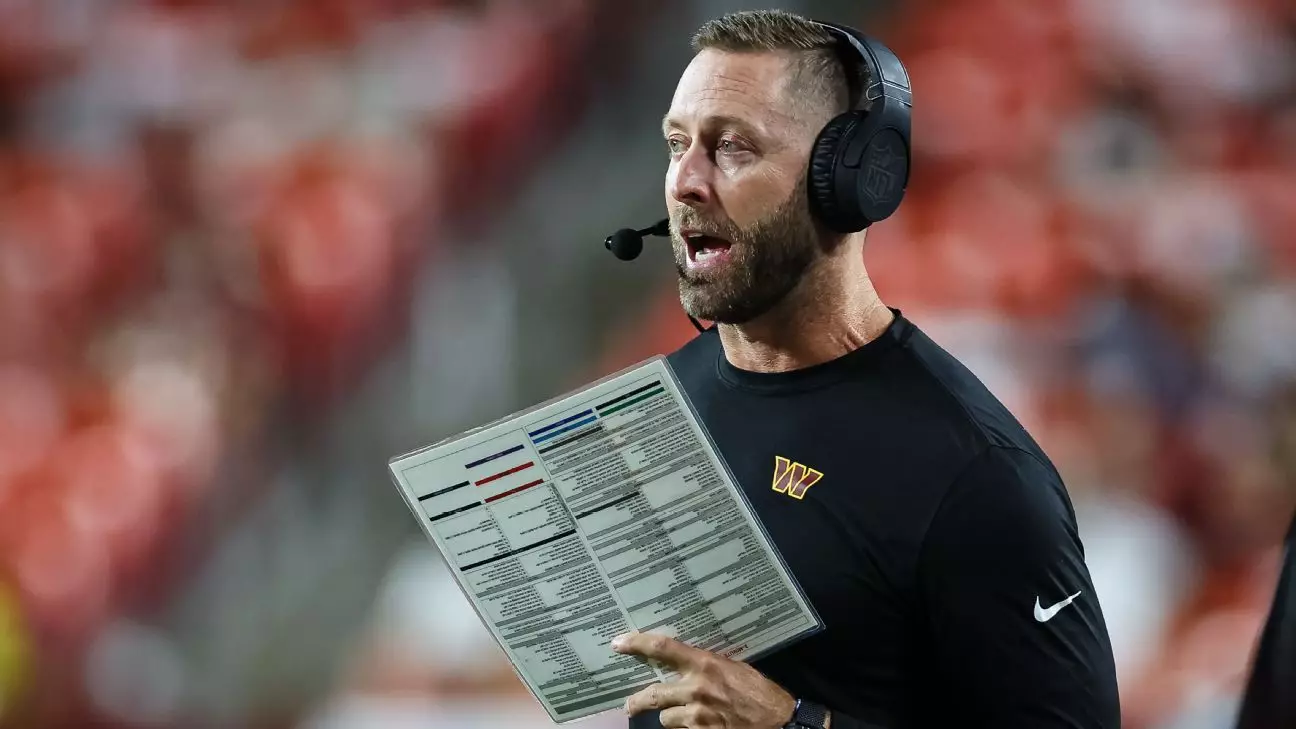Football is as much about timing and chemistry as it is about talent and strategy. When key players are absent or unprepared, even the most promising teams struggle to perform at their peak. The Washington Commanders exemplify this reality as they approach the upcoming season. Their current struggles, pointedly linked to a lack of synchronization among offensive players, underscore how vital it is for a team to develop on-field rapport before the first whistle blows. Missing star receivers, injured linemen, and a lack of real-time interaction threaten to derail what could otherwise be a formidable offense.
The hype surrounding the Commanders’ offensive roster has to be tempered with realism. Trading for well-regarded talents like Deebo Samuel and drafting promising prospects like Josh Conerly Jr. signals ambition, but without the foundational chemistry, these moves risk becoming mere paper victories. Success in football isn’t just made in the offseason with shiny acquisitions; it’s cultivated in the trenches and practice fields through sustained, live repetitions. This is precisely where the Commanders falter—they are missing key pieces during crucial developmental moments, thereby stunting their offensive evolution.
Absence’s Toll: Disrupted Rhythm and Fragmented Connections
The current scenario reveals the fine balance teams must strike during training camp. It is not enough to simply have talented players; they need to work cohesively, develop trust, and understand each other’s tendencies. Coach Kliff Kingsbury’s acknowledgment that the offense is a “work in progress” reflects a brutally honest assessment. When core players like Terry McLaurin are sidelined, either due to injury or contractual holdouts, the entire offensive rhythm is compromised.
McLaurin’s role as a primary target, especially given his rapport with quarterback Jayden Daniels, who flourished with him last season, highlights how interconnected these units are. The chemistry developed over months of targeted reps can’t be replaced with sporadic practices or film study alone. It’s about on-field interaction—trusting that a route run in practice will translate into automatic reads during a tight game situation. Without consistent reps, players miss out on critical adjustments and subtle timing cues that make or break scoring drives.
Injuries and Missing Pieces: The True Cost of a Fragmented Roster
Injuries are an inevitable part of football, but their timing can be devastating. Across the Commanders’ roster, injuries to linemen like Sam Cosmi and Brandon Coleman, as well as key receivers such as Noah Brown, have left the team shorthanded and vulnerable. While other teams might adapt with depth, the loss of starting players at pivotal positions hampers the offensive philosophy from fully materializing.
When the offensive line is compromised, the quarterback’s safety, the protection’s timing, and the running lanes all suffer. For a young quarterback like Daniels, developing trust with blockers and receivers simultaneously is critical. Yet, with essential players absent, the offense becomes predictable or disjointed, robbing it of the fluidity and explosiveness that can turn drives into touchdowns.
The Critical Need for On-Field Chemistry
Ultimately, football coaches and players understand that the clearest path to offensive excellence is through demonstrated cohesion in live settings. Practice repetitions build muscle memory and trust, transforming individual talent into collective brilliance. The Commanders’ challenge is to maximize their remaining time before the season begins, fostering a controlled environment where players can absorb new playbooks and forge that vital on-field rapport.
Jayden Daniels and Terry McLaurin’s previous chemistry suggests potential, but history shows that even star pairings need contemporaneous work to stay sharp. A single season’s success hinges on countless small details—timing, route adjustments, and non-verbal communication—that are cultivated through shared reps. Without this, the team risks entering games with a disjointed attack that defenses can exploit.
The upcoming season hinges on overcoming the current adversity—injuries, absences, and incomplete integration. For the Commanders, the journey toward a cohesive, high-powered offense isn’t paved solely with strategic plays but with relentless, on-field work. Time is their most pressing adversary. How they choose to rebuild and reconnect in the next few weeks could ultimately determine whether their offense becomes a well-oiled machine or remains a fragile, untested entity.


Leave a Reply